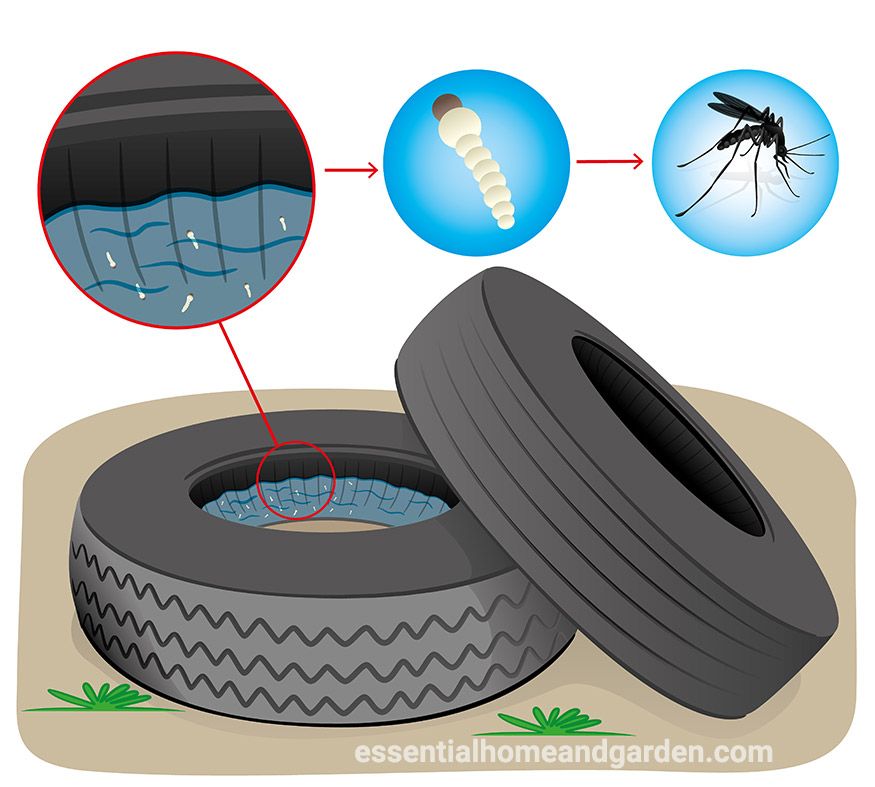Share
Dry rot is when the rubber in tires loses its moisture and becomes tough and brittle. Due to their lost elasticity, tires that have developed dry rot past a certain point need to be replaced as they are prone to blowing out while being driven on.
Dry rotting is more prevalent in tires that are stationary for a period of three months or more. This is because tires are kept moist by resins and oils within the rubber; these oils need downward pressure to be activated, and such pressure comes from coming into regular weighted contact with the road during driving. If your tires aren’t being driven on, then they lack this protection against moisture loss.
Although keeping tires in storage (either on their own or attached to a vehicle) can increase their chances of developing dry rot, there are a lot of precautions that you can take to ensure that your tires suffer minimal deterioration while in storage. The following will explain how to keep stored tires in top condition.
UV causes the oils and resins that keep tires moist to degrade and eventually leech out of the surface of the tire. Therefore, if tires are frequently kept in direct sunlight, they are far more likely to suffer from dry rotting.
In our guide to preparing a car for long-term storage, we spoke about the importance of keeping your car under a weatherproof cover while being stored. If you ensure that this weatherproof cover is long enough to cover your tires, then they should be protected from UV rays as well as from dust and debris. This is why covering your car is extra important if you are keeping your car in a storage space that lets light in.
Tires that are muddy are more prone to dry rotting. This is because as the moisture in mud evaporates off the surface of the tire, it lifts out some of the oils that help keep the rubber moist (its the same reason why licking your lips regularly can make dried, chapped lips worse).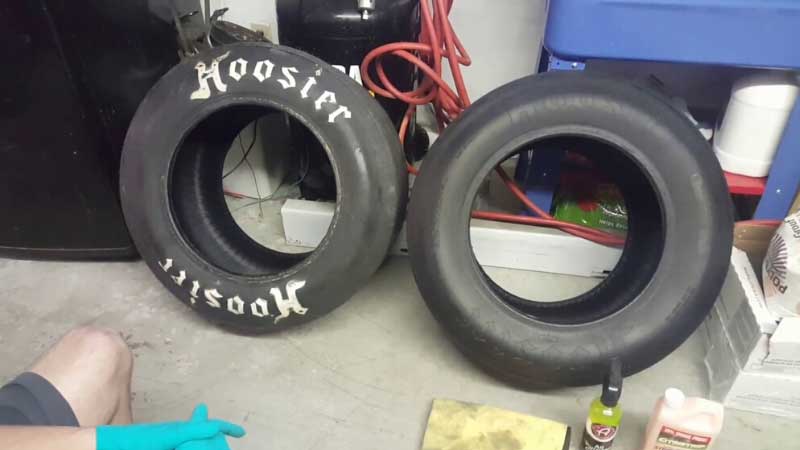
You should therefore clean any dirt or mud off the surface of your tires before you put your vehicle into long-term storage. The best way to clean tires is with warm water and a small amount of either hand soap or kitchen detergent. Do not use any specialist tire cleaning products. These are often petroleum based and are designed to be “rubbed in” to the tires as they are driven on. If the tires are not being driven on immediately after the application of these cleaning products then this can make the tire dry out even faster.
Temperatures that are above 68 Farenheit and below 45 Farenheit can speed up the dry rotting of tires. Similarly, regular rapid swings in temperatures (anything over 15 Fahrenheit in a couple of hours) can lead to dry rotting as it speeds up evaporation from the tire.
If possible, you want to store your vehicle in a space that is climate controlled, and where the temperature is slightly cooler than standard room temperature (55-59 Fahrenheit is ideal).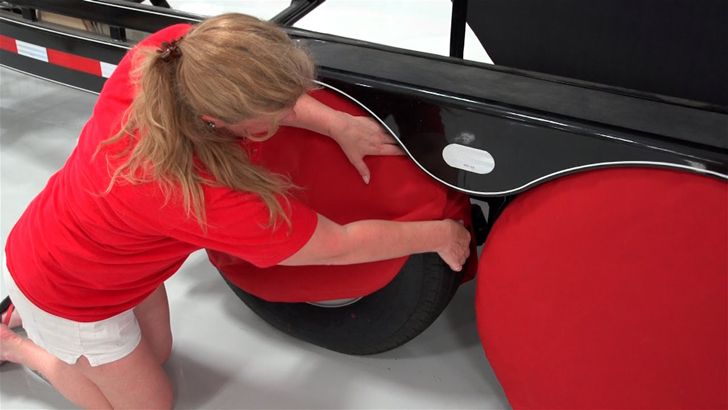 If you can keep your car in a storage facility that has humidity control as well as temperature control, then that is even more of a bonus, as excessively dry environments can accelerate tire degredation.
If you can keep your car in a storage facility that has humidity control as well as temperature control, then that is even more of a bonus, as excessively dry environments can accelerate tire degredation.
Dry rotted tires can be restored to the point where they can be driven on again, but only if the dry rotting has not lead to cracks in the sidewall of the tire. These cracks in the sidewall are more likely to occur if the tire is holding up the weight of a stationary vehicle while in storage.
Therefore, if you are storing your vehicle for more than three months, and have no plans on driving that vehicle during that time, you should consider removing your tires from the car. Ideally, you want to remove the tire from the wheel entirely, as even the stretching of the rubber around the rim of a tire can make cracks in the sidewall more likely to occur.
Vehicles without tires can be mounted on hydraulic jack stands.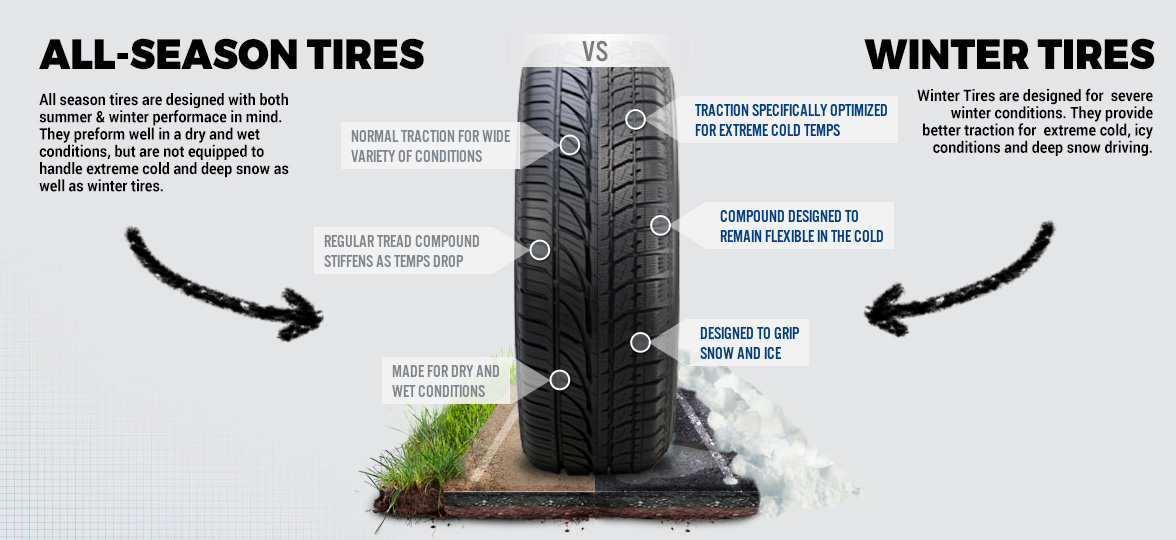 If this is not possible, then it may be worth buying a pair of cheaper second hand tires to have on your car while it is being stored. Just try to keep driving on these tires to a minimum – they are just a stop gap to prevent damage to your existing tires.
If this is not possible, then it may be worth buying a pair of cheaper second hand tires to have on your car while it is being stored. Just try to keep driving on these tires to a minimum – they are just a stop gap to prevent damage to your existing tires.
If you decide to remove tires from your car, or you are storing spare tires, then its best to keep them in airtight (or as airtight as possible) bags while they are in storage. Oxygen is a contributor to dry rotting (this is why a degree of dry rotting occurs in all tires) so keeping tires in airtight bags can help reduce the speed at which dry rotting occurs.
There are several options to how you can store tires in airtight conditions. Specialist tire bags are available, and these can come in custom sizes to match the size of your tires. You can also use vacuum sealed bags, although the majority of these available at homeware stores will not be large enough to store a tire in.
Storing your tires in bags (even if they are not airtight) will go a long way to preventing dry rot compared to storing them unbagged. Buying a bunch of large industrial platic bags and taping up the open ends with electrical tape is a cost effective way of keeping loose tires stored in a way that protects them from dry rotting.
Buying a bunch of large industrial platic bags and taping up the open ends with electrical tape is a cost effective way of keeping loose tires stored in a way that protects them from dry rotting.
If you want to store a vehicle, a great place to do this is our car storage spaces in Belleville. Save precious garage space at home while keeping your car protected behind fencing, 24-hour video surveillance, and other security measures. To snag storage for your car today, simply call or rent online today!
This article was written by Mike Skoropad. Mike is the CEO of Utires, an online tire retailer headquartered in Chicago.
Share
1. Regular Inspections:
Inspect both the sidewalls and tread of your tires monthly to monitor the overall condition, specifically looking for any cracks, discoloration, bulges, wear or additional unnatural blemish.
2. Park out of the sunlight for extended periods of time:
Too much exposure to UV rays from sunlight, especially in consistently warmer climates, is a leading cause of premature sidewall weathering. It’s recommended to park in more shaded areas if your vehicle will be exposed to excessive heat and sunlight. If you plan to park a vintage car or vehicle outside while storing, covering the vehicle and tires will help stave off UV rays.
3. Cleaning and Protecting:
The simple method is to clean the surface monthly with a washcloth using water and a mild dish soap. A water-based cleaner or solution such as this won’t harm your tires by adding any additional chemicals that could potentially impact the tire’s compounds and materials. After washing the tires with soap, give the tires a simple rinse with water.
4. Avoid Harmful Products and Chemicals:
If you are planning to use other tire protectants or cleaning products, read the product labels and be aware of what other chemicals are going on your tire.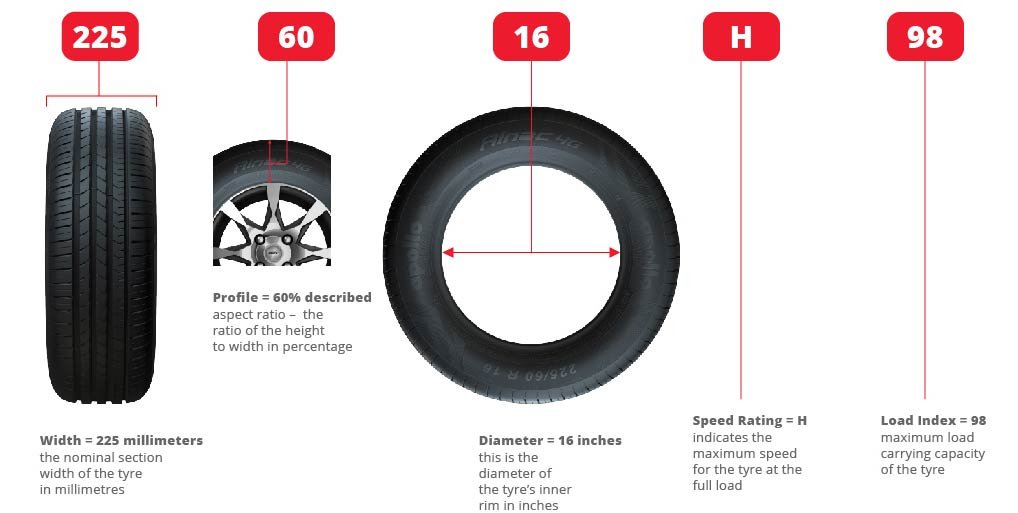 Stay away from using any cleaning products that are petroleum-based, as the products may degrade the rubber’s weathering agents that may lead to premature cracking.
Stay away from using any cleaning products that are petroleum-based, as the products may degrade the rubber’s weathering agents that may lead to premature cracking.
5. Proper Tire Inflation:
One of the leading causes of tire failure is driving with underinflated tires. When tires are underinflated, there is increased wear on the tire tread, which generates excessive heat, and can result in severe cracking, component separation or a tire failure.
Tires should be inflated at the proper levels recommended by your vehicle’s manufacturer and tire inflation pressure should be checked monthly. If cracking or sidewall weathering is evident in your tires, keeping the tires properly inflated may be more difficult not be possible as air loss may occur through the affected areas. Maintaining proper inflation pressure is the single most important thing you can do to promote tire durability and maximize tire life.
6. Overloading:
Tires are specifically made to fit the vehicle and each tire has a recommended load capacity, which is the actual weight of the vehicle plus additional weight carried by that vehicle. Adding weight over that load capacity is considered “overloading”, and it will place too much stress on the tires. This additional weight to your tires may cause severe cracking or a potential tire failure. To learn more about your tire and vehicle load limits, consult your owner’s manual and learn more in our Tire Care & Maintenance Guide.
Adding weight over that load capacity is considered “overloading”, and it will place too much stress on the tires. This additional weight to your tires may cause severe cracking or a potential tire failure. To learn more about your tire and vehicle load limits, consult your owner’s manual and learn more in our Tire Care & Maintenance Guide.
7. Extended Parking Care:
If a vehicle is planned to be stationary for an extended period, such as a vintage car, a trailer or recreational vehicle, it’s recommended to follow the steps below:
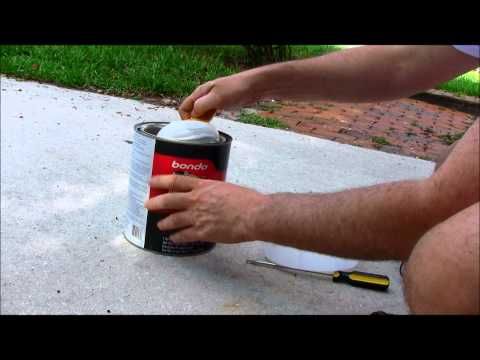
8. Tire Storage Care:
If long-term storage of winter or summer tires is planned, it’s recommended to follow proper guidelines. The ideal method to store tires would be to keep them mounted on their wheels and store on hooks through the rims themselves off the ground. Read more about how to store tires to help extend the life of your tires.
Just as you invest in your vehicle, you invest in your tires. To help ward off the possibility of sidewall weathering in your tires, follow the suggestions above for proper care and maintenance. If cracks or noticeable sidewall weathering signs begin appearing, contact a local Goodyear location for a tire evaluation.
People often tend to evaluate the quality of tires and their condition solely by the rest of the tread layer.
Of course, this is an important indicator, but there is a problem that, hitting the tread, does not immediately show visible marks on the surface. Cracking or "dry rot".
Cracking or "dry rot".
Most often, the causes of its appearance are the long storage of the vehicle without movement, low tire pressure, overheating and exposure to certain chemicals. When tires are carefully inspected, dry rot can be seen by the presence of small, web-like cracks.
Cracking occurs when the oils and moisture in the tire's rubber material begin to evaporate, making the rubber hard and brittle, causing the tire to break down quickly.
Simply put, tires found to be carrying dry rot should NOT be used as unsafe tires.
Although there are no tire brands that are more or less susceptible to dry rot, one should always be aware of the storage and operating conditions that contribute to its occurrence: long periods of inactivity at high temperatures, exposure to chemicals (pesticides, herbicides, etc.). These problems are most typical for agricultural machinery and its wheels.
This does not mean that agricultural tires are inherently more likely to crack. It's just that conditions that are considered favorable for the formation of dry rot usually occur exactly where tractors and combines work.
It's just that conditions that are considered favorable for the formation of dry rot usually occur exactly where tractors and combines work.
Actions to prevent the occurrence of cracking involve simply eliminating the consequences of adverse factors with the help of elementary actions.
Proper storage
If you are storing your car for winter or just long-term storage, keep an eye on the factors that are within your control whenever possible. Do not leave the equipment under scorching direct rays for a long time, and always put it in a garage or shed whenever possible.
In winter and summer, of course, it is ideal to store cars in a room where the temperature is regulated.
Regular cleaning
Chemicals are a common occurrence in agricultural businesses and some industries. Chemicals that come into direct contact with the surface of the wheels must be washed off after each work cycle. Simply rinsing with soapy water is enough to prevent harmful compounds from penetrating further into the depths.
Pressure control
Low pressure is one of the serious threats to the good condition of tires, leading to dry rot. Under-inflated tires can develop cracks in the sidewall through which air leaks, contributing to the enlargement of the cracks and the drying of the rubber.
If the tires on your loaders do not have time to last until the tread is completely worn out, not due to exposure to chemicals or aggressive sun, but due to frequent punctures due to production features, pay attention to Tyrefill technology - filling tires with polyurethane.
The PST company has been providing this service to its customers for several years and has collected quite a lot of positive feedback and properties of the proposed composition. The tires are softer and more “springy” than ordinary solid tires, while they are not afraid of sharp objects.
Call and find out more: +7 (495) 150-04-39
With the onset of the new season, motorists have a question - how to properly store tires? Can I store them in the garage or on the balcony? What happens if the requirements are not met? We will tell you how to handle tires removed from the car.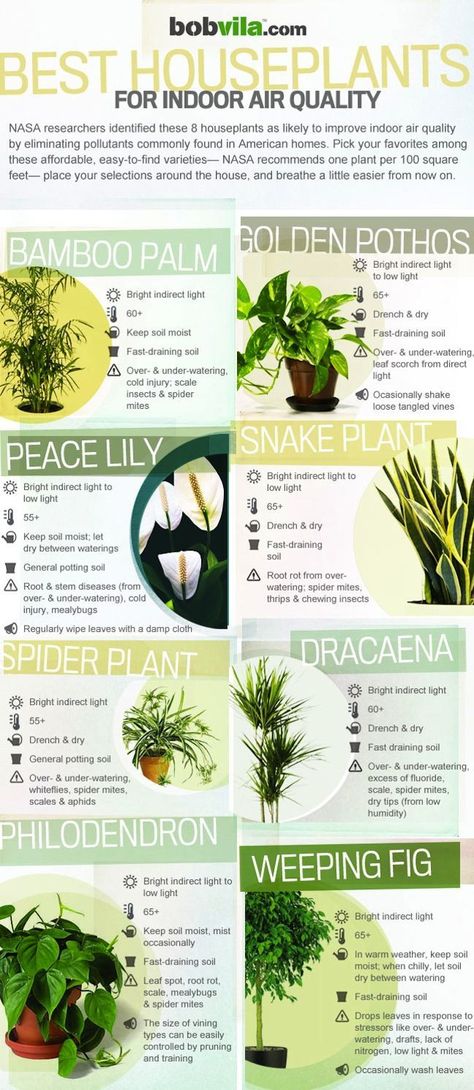
Tires are made of soft elastic material that is subject to deformation. In inappropriate conditions, they quickly lose their properties. If you have not learned how to properly store tires, you may experience such unpleasant consequences:
Don't risk your safety!
According to GOSTs, tires can be stored in a dry place, sheltered from precipitation, at a temperature of -30 to +40 C°. These requirements are met by garages, outbuildings, storerooms, glazed balconies and other similar premises.
Interested in how to store tires in winter? The main enemies in this case will be snow and water.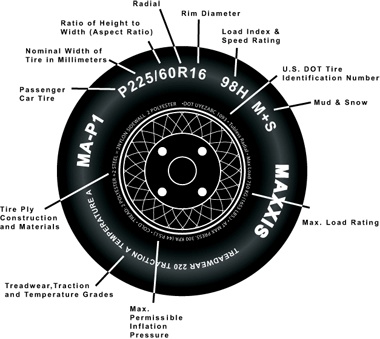 They can damage the tire by causing the sensitive material to warp. The same applies to discs that can be corroded. To maintain the properties of the tire in winter, good ventilation should be provided. It will be even better if you can organize heating.
They can damage the tire by causing the sensitive material to warp. The same applies to discs that can be corroded. To maintain the properties of the tire in winter, good ventilation should be provided. It will be even better if you can organize heating.
If you need to know how to store wheels in the summer, then you should pay attention to bright sunlight. UV radiation is also detrimental to tires: it deteriorates their properties, causing accelerated wear. Therefore, you should buy special covers made from natural materials. In order for the tires to remain elastic and durable after the end of the summer season, you need to periodically turn them or shift them, observing all the requirements.
If you don't have space to put your wheels in your garage or on your balcony, you can take your tires to a special warehouse. The advantages of such a solution are:

Properly storing tires is not difficult, but you need to do some preliminary preparation. Each tire should be thoroughly washed from dirt - adhering soil, asphalt particles and other substances can destroy the material. During this procedure, you can carefully inspect the surface of the wheel, finding cuts, punctures and other damage on it.
It is advisable to store tires on disks - in this case, they retain their original shape better. In addition, with the onset of the new season, you will save on the services of the service center. Each tire should be pre-treated with silicone grease. Do not confuse it with a color restorer that contains a solvent! In winter, the lubricant will prevent the formation of ice: it will fill the pores of the tire and push the water out of them. In the summer season, the composition forms a protective coating that will help prevent the elastic material from drying out.
To store summer tires, it is advisable to choose heated rooms.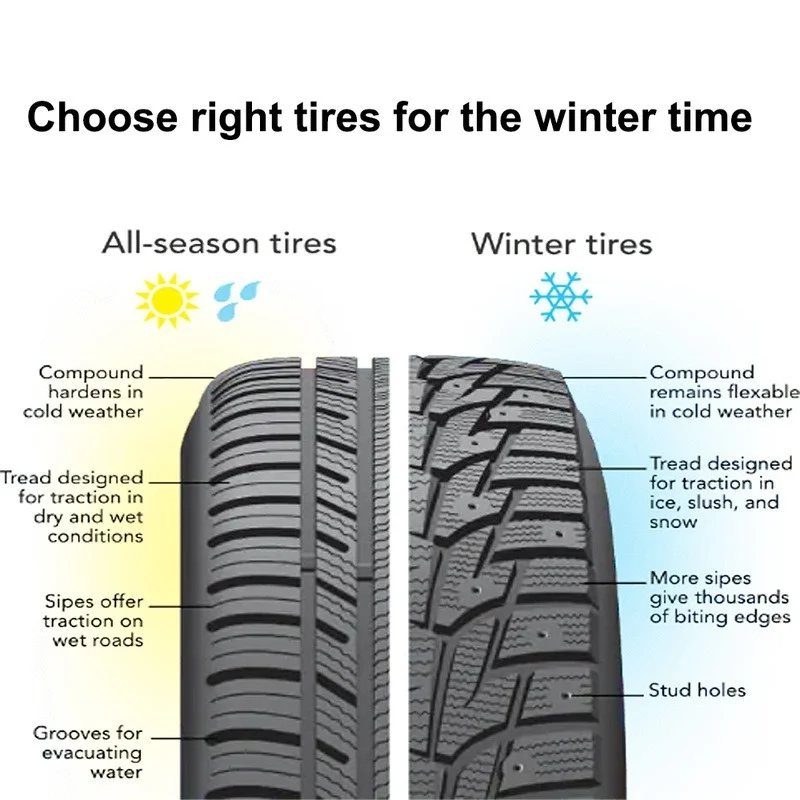 With a strong decrease in temperature, they can “suffocate”, covered with microscopic cracks. This is fraught with rapid stratification during high-speed driving and a complete loss of control. If there is no heating, you need to put the tires in a dry closed garage or shed where snow and water do not penetrate.
With a strong decrease in temperature, they can “suffocate”, covered with microscopic cracks. This is fraught with rapid stratification during high-speed driving and a complete loss of control. If there is no heating, you need to put the tires in a dry closed garage or shed where snow and water do not penetrate.
If summer tires are afraid of frost and moisture, then winter tires are afraid of ultraviolet radiation. When folding them on the balcony, be sure to cover the wheels with a piece of thick cloth. But do not forget to leave a couple of holes for ventilation so that moisture does not accumulate inside. It is undesirable to store winter tires without disks: in the warm season they become very soft and easily deformed. The consequences of such damage will be unpleasant and even dangerous.
Most motorists are wondering how to store tires on rims? We have already said above that this method helps to save time and money during the off-season “changing shoes”.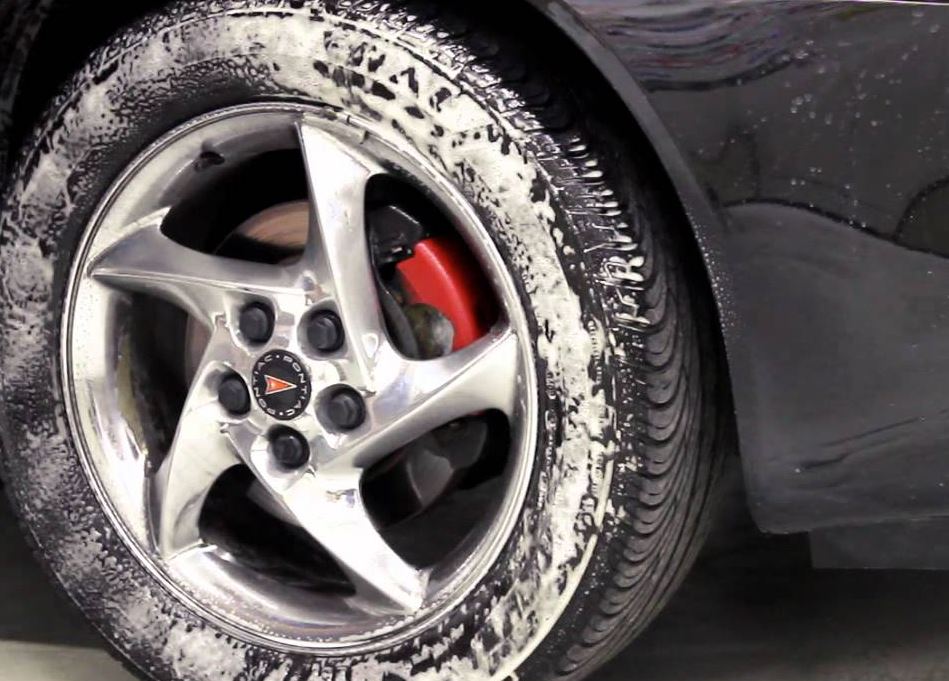 The ideal option for placing tires on rims is in limbo. To do this, you can install special brackets on the ceiling or in the wall. In this case, the main load is assumed by the metal rim - the soft part is not subjected to unnecessary loads.
The ideal option for placing tires on rims is in limbo. To do this, you can install special brackets on the ceiling or in the wall. In this case, the main load is assumed by the metal rim - the soft part is not subjected to unnecessary loads.
To know how to store wheels on rims, you also need to pay attention to pressure. The optimal indicator is from 1 to 1.5 atmospheres. At a lower value, the tires are at risk of squeezing, and at a higher value, bursting. Tires on steel or light alloy rims should be lowered before storage. In a specialized center, experienced employees will take care of this, but in the garage you will have to do it yourself.
What to do if there is no space for hanging tires on the rims? In this case, you can not put them vertically - if the pressure decreases, this will lead to deformation of the frame. It is best to stack tires in a pile, like a children's toy "pyramid". In this case, the following recommendations should be observed:

By knowing how to store your wheels on rims, you will save their properties, increase road safety and reduce your costs.
Many car owners have to store tires without wheels, a set of which is quite expensive. In this case, you will have to follow other recommendations. If you decide to store your tires without rims in your garage, never hang them from the ceiling or stack them. In both cases, the elastic material will be constantly subjected to excessive loads. This will lead to tire deformation, which we have already discussed earlier.
How to store tires without rims? To do this, install them vertically. In the absence of discs, this situation will be the only correct one. It will evenly distribute the load on the tire carcass. If you are interested in the question of how to store wheels without discs in the ideal case, you should know that they should be rotated periodically by 30-40 degrees.